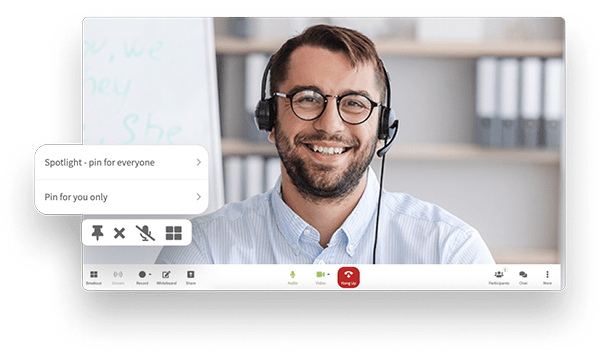 Every project starts with a creative vision. A seed of an idea that when planted and watered grows into a thriving, living, and breathing piece of work that expresses your viewpoint to the world. Especially for projects captured on-screen, planning from concept to camera requires an incredible amount of “nurturing” and work behind the screen. There are so many moving parts involved when it comes to making a vision come to fruition that without the proper infrastructure set it in place, your idea could always remain just that – an idea.
Every project starts with a creative vision. A seed of an idea that when planted and watered grows into a thriving, living, and breathing piece of work that expresses your viewpoint to the world. Especially for projects captured on-screen, planning from concept to camera requires an incredible amount of “nurturing” and work behind the screen. There are so many moving parts involved when it comes to making a vision come to fruition that without the proper infrastructure set it in place, your idea could always remain just that – an idea.
Give your idea legs and bring it to life with communication that lifts your production off the ground starting with expertly curated casting calls and auditions. Through photography, interviews, motion pictures, special effects and beyond, collaboration in media, the arts, and entertainment can come together across multiple platforms and locations.
If you have agents in New York, talent in London and directors in Toronto, video conferencing connects you to the people you need in a matter of moments, regardless of geographic location.
If you’re looking for actors for film, TV, advertising; fashion models for a runway show; hosts for reality TV and more, host auditions using video conferencing technology for a successful, pain-free casting process.
Here are a few ways using video conferencing can enhance how you conduct auditions, interviews and meetings for successful casting and better pre-production communication:
10. Extend Your Reach, Discover More Talent
Online casting via two-way communication technology exponentially expands your reach. Instead of in-studio or in-office castings made available only to those who are nearby, bringing the audition online breaks geographic limitations.
Anyone from anywhere can see your “Call for entry” and submit. This further extends the invitation to undiscovered or underground talent as well as sought-after talent who are currently involved in another project or are on set or traveling. Potential actors, new hires, and more can pre-record their “audition tape” or drop into the online meeting live.
9. Promote Auditions From Home
Encourage candidates to set up shop and record from home. Either by an initial orientation online or via email, send off the necessary materials like the script or audition details in advance for candidates to practice and nail at home before sending it in.
8. Make Decisions Faster Or With Buffer Time
By taking auditions online, you can make decisions on your own time. Reaching a verdict can be done on the spot, or you can conveniently add in buffer time for executives and upper management to weigh in.
Whether as a panel in the same studio, or from the comfort of each individual’s home or private working space, directors, talent and casting agents, producers, and executives can convene in an online space in real-time to view auditions or take part in an online panel for discussion and shortlisting.
As the casting process unfolds, online meetings provide the talent with a direct line of communication to the pre-production crew. Reduce the headache of complicated, overlapping schedules, and travel costs like flights and accommodation that significantly get cut down as the pool of candidates gets smaller. Plus, talent scouts don’t have to travel back and forth once they’ve made the connection. Shortlisting candidates isn’t a long drawn out process and can be done without being in person.
 7. Give Quality Feedback
7. Give Quality Feedback
Communication at all levels of production is what truly lifts any project off the ground. From a small boutique agency’s local TV spot to a full-fledged mega-studio backed motion picture, time is money. Video conferencing software assists in expediting immediate feedback for on-the-spot changes and continuity. No one has to work in silos when interdepartmental meetings can be held online in the moment, recorded now to watch later or scheduled at the drop of a hat for an urgent change in direction.
For more detailed feedback, video conferencing that comes fully equipped with smart summaries and transcription technology makes any brainstorming session or progress meeting run more smoothly. Every spoken word is captured, dated and speaker tagged using artificially intelligent automatic transcription. Repeated phrases and trends are organized for easy retrieval post-conference, perfect for finding shooting details or important location addresses on a time crunch.
6. Tighter-Knit Collaboration
Full-motion content isn’t possible without a team of people supporting its creation. From storyboard to screen, multiple departments have to provide feedback and direction across the board, review budgets and spending, production treatment, creative direction, shooting locations, editing timelines and so much more. Whichever way your project unfolds, the success of its completion relies on the quality of clear and effective communication whether immediate or scheduled.
Consider three features every sophisticated two-way video conferencing platform should come with to enable heightened feedback, progress reports, status updates, and more:
Online Whiteboard:
A digital space to communicate with shapes, colors, and images, perfect for illustrating abstract concepts like staging, lighting, etc. Transfer files, images, media, links and more.
Document Sharing:
Quickly and easily drag and drop documents and files that need to be sent on the spot. Easily retrieve, access and present voice reels, audition videos, headshots and more from the cloud to share with others, and collaborate immediately.
Screen Sharing:
Collaboration, productivity and engagement becomes easier when you bring other meeting participants onto the exact same page so they can see what you see. This works especially well when everyone needs to view the same audition video at the same time or discuss changes to the script.
Connect with an international panel of collaborators, your team in an overseas office, or a partner studio down the road. It’s like opening up your project to a virtual conference table for anyone to sit at.
5. Accelerate Communication Post-Casting
Tight timelines, budgets, and long working days can make it challenging to get everyone in the same place in-person, and sometimes, even online. But with technology that provides the second-best option to being in person, accelerates how the message is sent and received and comes loaded with features that take the pain out of calculating time zones, you can really get the ball rolling to dispatch work. Other features that tighten communication includes automatic invitations and reminders, zero download browser-based software, live video streaming, and meeting recording.
Post-casting, you can have all your favorite recordings saved and centralized in one place via the cloud for easy file sharing and document access. Transferring highly confidential scripts and screenplays? Look for a video conferencing platform that has 128-bit encryption and additional security features like One-Time Access Code and Meeting Lock.
 4. Conduct A Group Or One On One Audition
4. Conduct A Group Or One On One Audition
Save time and raise the stakes by inviting potential talent to perform in front of each other in a group setting – online. Doing this near the beginning of the casting process can weed out subpar talent quickly so you can spend more time on finding the right person for the role. Hold a bit more of an improvisational audition by doing it live in front of a panel of casting directors, managers and agents for a dynamic multi-party casting call. This is especially helpful if you have multiple roles in a scene and want to test the chemistry between actors.
3. Record Castings And Auditions
Nearing the end of casting and have multiple actors competing for the role? Get talent to really hone in on their craft and nab the part by setting up an online meeting in which they are performing and improvising in real-time. Alternatively, invite talent to submit their own self-tape that is pre-recorded. Not only is this a time saver when having to go through hundreds or thousands of submissions, but it’s fun content to have down the line for behind-the-scenes footage when your production or the talent makes it big!
2. Streamline Production Progress
When pieces of production are getting worked on in tandem, it’s possible to hit a block in the pre-production line or experience a delay in the workflow. Bypass the long email chains and bottlenecks when deciding on talent for roles, negotiating budgets and salaries, and filming schedules by setting up a virtual meeting to cover more ground across different departments.
During and post-production, video conferencing meetings help speed up how work gets done by cutting through the clutter to send and receive information more directly, as well as push along status updates, feedback, film editing, reviews and other urgent information. Create more flow within the creative process for straightforward handovers, delegating work and overseeing different checkpoints in progression.
1. Feedback From Home
Nearing the finalization of casting, communication and reviews with production companies, stakeholders, execs, and directors is required in order to move onto the next step. Open the lines of communication with decision-makers near or far at home for faster feedback, amendments and accelerated progress.
Here are a few tips to hosting a successful video conference interview or audition with talent:
- Create An Agenda
Prior to the meeting, send out the agenda or itinerary and script to participants a few days before their reading. This will help them to prepare, and ensure you have a smooth experience too without going into overtime. - Send And Receive Vital Info Ahead Of Time
Don’t forget to provide the candidate with the vital info that includes log-in info, time, date, etc. If you’re looking for anything specific like slate information, plus height, weight, hometown and more, don’t forget to mention that too. - Keep Meetings Small
When engaged in a pre-production or post-casting meeting, try to keep the syncs small and on point. Too many decision-makers will make the elimination process drag on for too long. This applies to multi-party auditions as well. Keep the crowd to a minimum by inviting only those who need to be there. - Check The Tech
Do a run-through before audition day to ensure all the technology is functioning fast and efficiently. This will help prevent disruptions, and having to stop or delay the process to troubleshoot what’s wrong. - Bring In A Mod
Allocate someone as a moderator to help with the flow of candidates and to manage the talent, readers, and crew. A moderator will be able to move the process along on the ground as well as online and act as a point of contact should someone have technical difficulties or ask a question. - Go With Video Conferencing Tech That Performs
Choose a video conferencing platform that is easy and intuitive to use, but also boasts a wide range of sophisticated features that enrich the experience. Aim for high-quality audio and video technology designed for top-notch communication, giving talent a cutting edge to perform at their best, while making your job easier and more manageable.
Let Callbridge’s high calibre two-way communication platform bring cohesion to how you run your casting calls and auditions. You can expand your reach to discover new and emerging talent, encourage auditions done from home, make faster decisions and speed along the production time. Enjoy key features like Online Whiteboard, Document Sharing, Screen Sharing, and the signature feature Cue™ which automatically transcribes, adds date stamps, and speaker tags and more.
Make auditions and casting more compelling with technology and features that empower your vision’s process to be faster, more efficient and more streamlined from concept to camera.

 7. Give Quality Feedback
7. Give Quality Feedback 4. Conduct A Group Or One On One Audition
4. Conduct A Group Or One On One Audition




